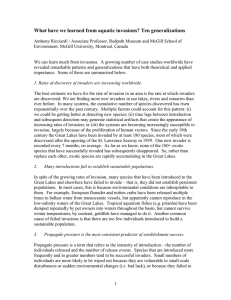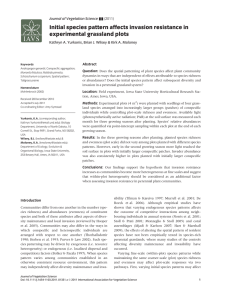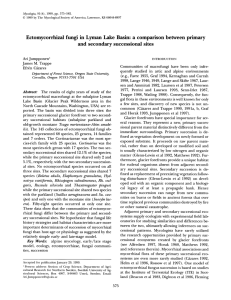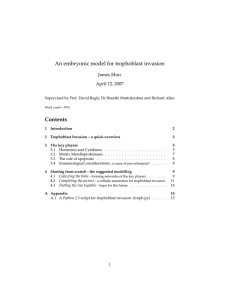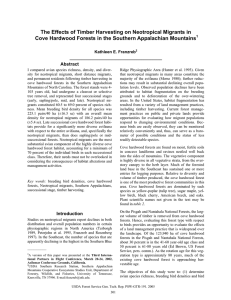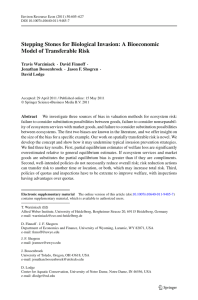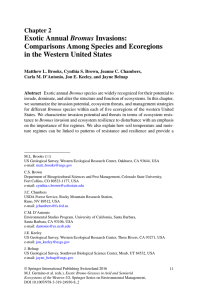Spatio-temporal aspects of exotic species invasion in an old-field successional... Kathryn A. Yurkonis
advertisement
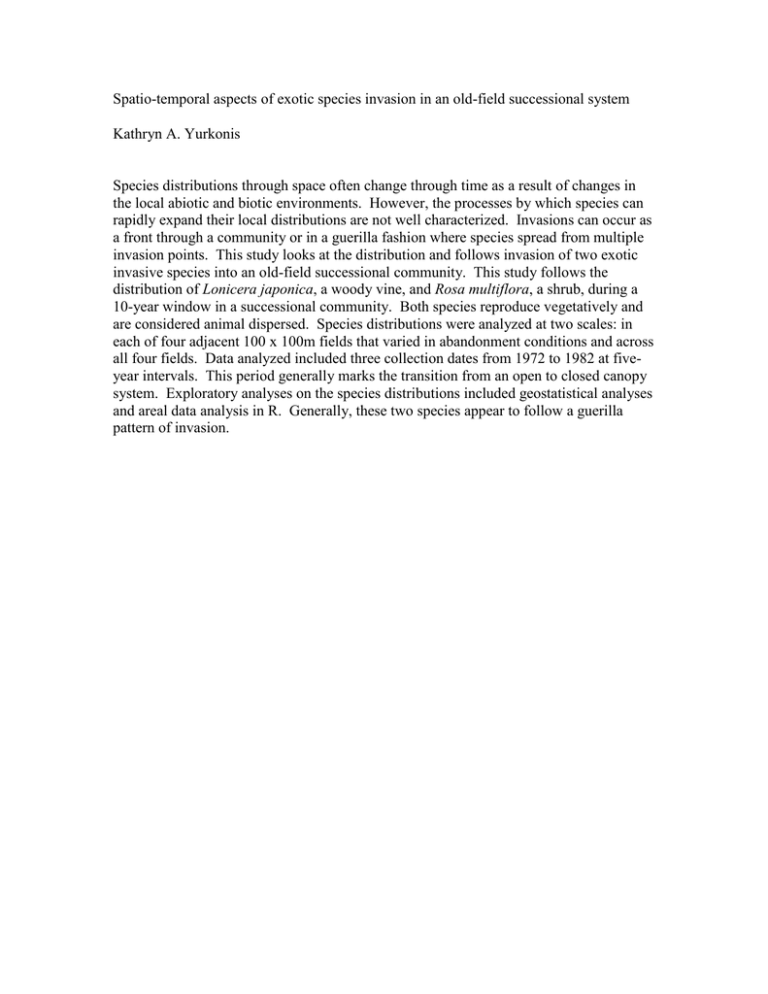
Spatio-temporal aspects of exotic species invasion in an old-field successional system Kathryn A. Yurkonis Species distributions through space often change through time as a result of changes in the local abiotic and biotic environments. However, the processes by which species can rapidly expand their local distributions are not well characterized. Invasions can occur as a front through a community or in a guerilla fashion where species spread from multiple invasion points. This study looks at the distribution and follows invasion of two exotic invasive species into an old-field successional community. This study follows the distribution of Lonicera japonica, a woody vine, and Rosa multiflora, a shrub, during a 10-year window in a successional community. Both species reproduce vegetatively and are considered animal dispersed. Species distributions were analyzed at two scales: in each of four adjacent 100 x 100m fields that varied in abandonment conditions and across all four fields. Data analyzed included three collection dates from 1972 to 1982 at fiveyear intervals. This period generally marks the transition from an open to closed canopy system. Exploratory analyses on the species distributions included geostatistical analyses and areal data analysis in R. Generally, these two species appear to follow a guerilla pattern of invasion.






